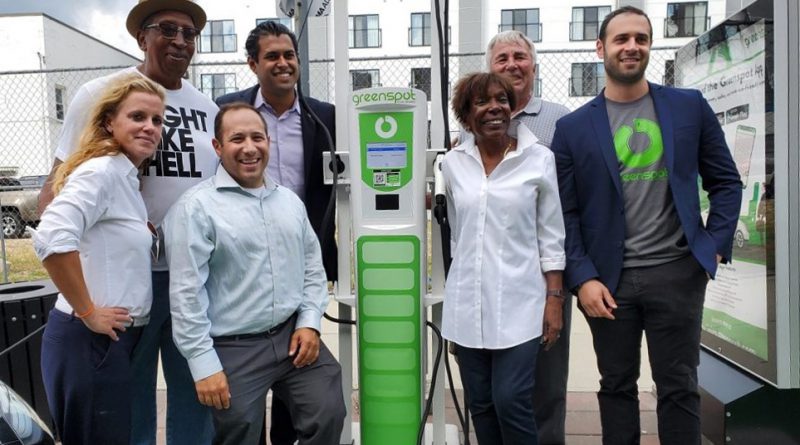The City of Asbury Park, and the City’s Director of Transportation Michael Manzella (second from left, first row), are working to provide residents and visitors with convenient and sustainable ways of getting around town. Photo Credit: Michael Manzella
Known widely for its rich musical heritage and renowned beach and boardwalk, the City of Asbury Park has a new claim to fame among New Jersey’s planning professionals – as a laboratory of multi-modal transportation. The list of mobility hits is getting longer than a Springsteen discography: bike lanes, bike share, e-scooters, and road diets, to name a few.
Since the 2000s, the city’s waterfront and downtown have witnessed a major revival after decades of disinvestment. Multi-family housing has sprung up in the downtown and surrounding areas. Rezoning in the downtown area has allowed extensive conversion of upper story units to residential. New businesses, a beach cleanup, and restoration of historic Convention Hall and Paramount Theater are restoring the waterfront boardwalk to its glory days.
Amid the city’s revival and many experiments with new ways of getting around, Director of Transportation for Asbury Park Mike Manzella is in demand. Like the up-and-coming E Street Band hitting the road in the early 70s, this up-and-coming planner has been on a whirlwind tour – not of music halls and stadiums – but of planning conferences, panels, and workshops around the state.
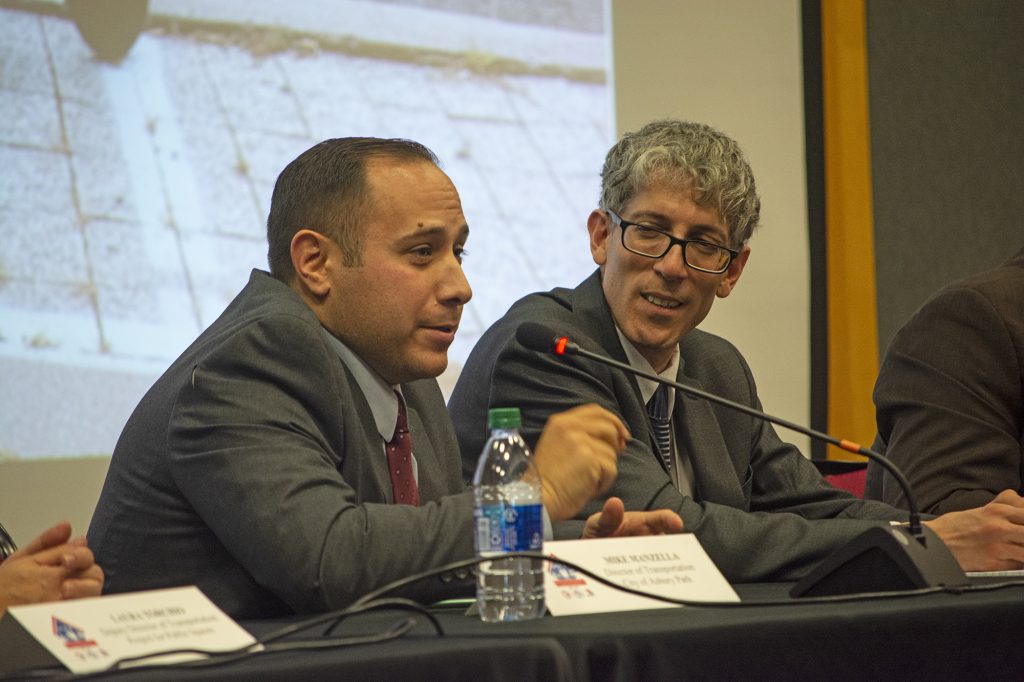
Mike is always ready with a candid assessment of what works, what doesn’t, and what needs to be carefully managed.
In 2016, he joined the Asbury Park planning department, working with Director of Planning Michele Alonso at an exciting time of sustainable and inclusive urban revitalization. Since then, Mike has helped advance the department’s goals by contributing his extensive knowledge of emerging mobility solutions and an entrepreneurial spirit.
He can’t accept every conference invitation, but in between fielding complaints about parking tickets and meeting with local bike-ped advocates, Mike sat down with NJTOD.org to share the latest updates and lessons learned.
Here’s the top 10 things we took away.
1. Bike-ped investments spur development of vibrant, unique, and unforgettable places
Asbury Park is making major investments in transportation to catalyze development. Specifically, the City is investing in multi-modal transportation to catalyze compact, mixed-use, walkable, transit-friendly development.
In the 2000s, the City implemented a streetscape enhancement project along Springwood Avenue to the southwest of the rail station, a once vibrant commercial district that declined starting in the 1970s. Since the improvements were made, the City has cut ribbons on two new mixed-use, residential developments on Springwood Avenue, one mixed-income and one public housing. The City also implemented streetscape improvements on Cookman Avenue, has made pedestrian improvements at numerous intersections, is advancing a road diet along Main Street (NJ 71), and received an NJDOT Transit Village grant to install wayfinding signage.
NJDOT designated Asbury Park a Transit Village in 2017, and currently the City is working on plans for transit-oriented redevelopment of municipal-owned properties adjacent to the Asbury Park NJ TRANSIT rail station. The City originally intended to redevelop the site with a mix of new municipal facilities and mixed-use residential, but the financial calculus didn’t work out. Now the City is considering plans for private development on the site and moving municipal facilities to a new site. To get things started, the municipality will invest in a parking structure, which, Mike pointed out, is a facility not easily financed by private development. The garage will provide shared parking to the new projects at the station, spurring development and moving the focus away from negotiations of parking minimums.
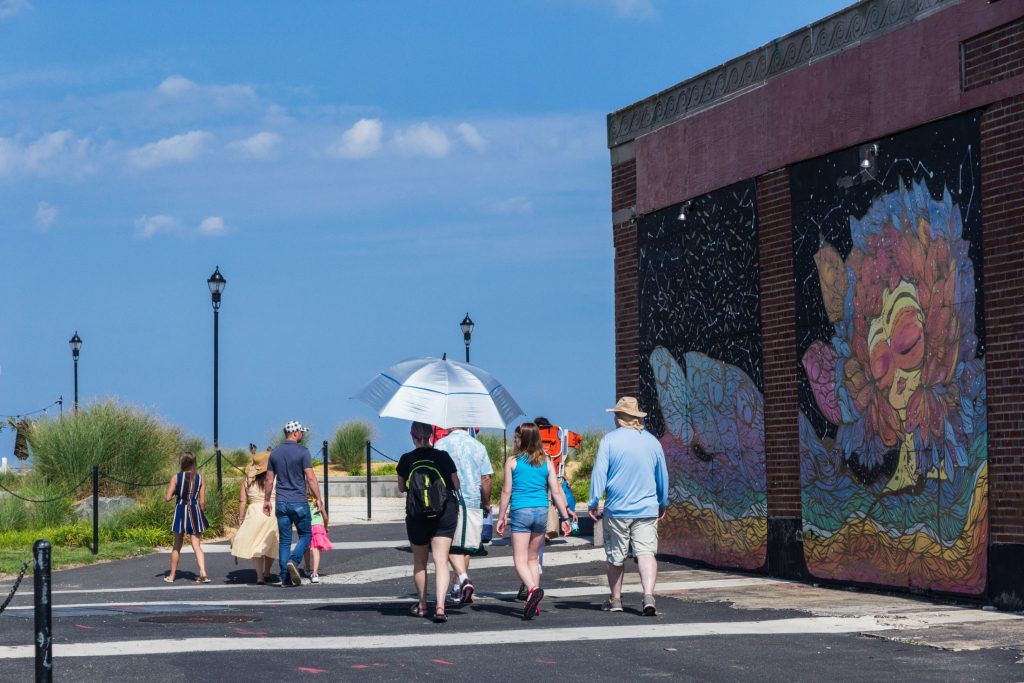
2. Micro-mobility is no longer a luxury for TOD communities
Asbury Park’s renaissance has been accompanied by an influx of visitors and the vehicular traffic they bring. As the number of local eateries and other attractions in Asbury Park continue to multiply, so have the number of ways to travel among them. Since Mike took up his position, his focus has been to minimize the use of single-passenger vehicles within the city and support sustainable transportation as the primary means of moving around.
“Micro-mobility presents a real opportunity to really transform how to move about the city and to have a real impact from a land use perspective,” Mike pointed out.
In a city that is only 1.6 square miles, scooters and bikes offer easy connections between the residential neighborhoods and the downtown, train station, and waterfront. A major goal of the micro-mobility programs is to provide affordable transportation options that improve access to the city center and transit facilities for historically disadvantaged neighborhoods.
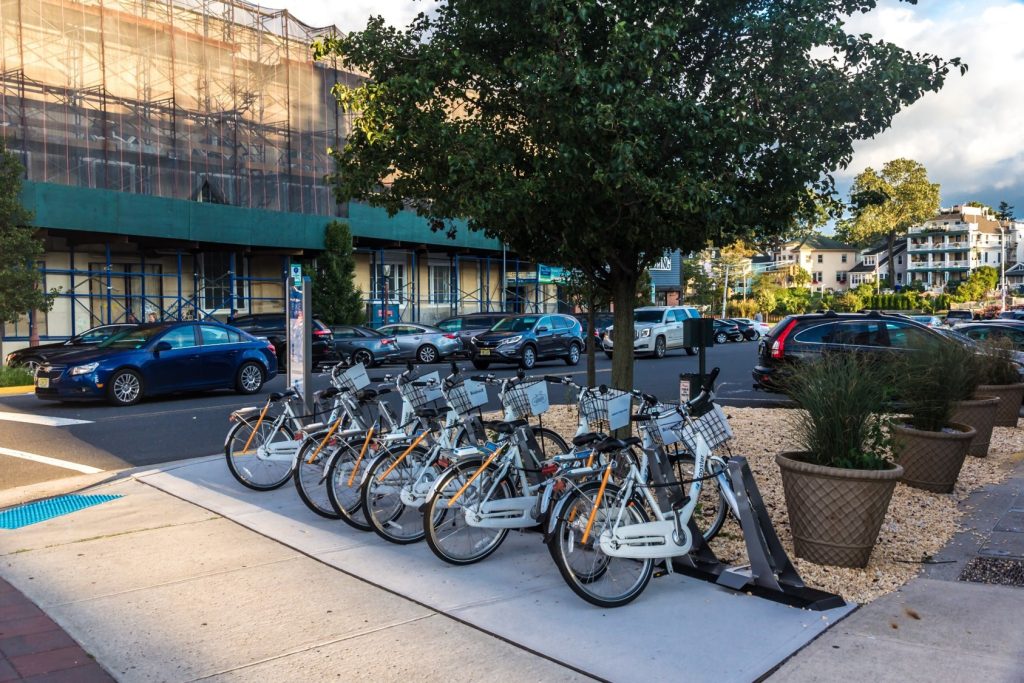
Following adoption of a Complete Streets policy in 2015, the City installed over 100 bicycle racks in the downtown and waterfront, and launched the Asbury Park Bike Share program with vendor Zagster in August of 2017 and a Spin e-scooter program in August of 2019. The City also installed over three miles of bike lanes in the downtown and the residential neighborhoods to the west.
3. Micro-mobility won’t be perfect the first time around
Many communities throughout New Jersey have attempted implementation of micro-mobility, from dockless bikes to e-scooters, some with more success than others. Any micro-mobility program will experience issues when starting out, but that shouldn’t be a reason to give up. Asbury Park has constantly tweaked its e-scooter program, responding to complaints and concerns from the community and continuing outreach efforts. The City lowered the speed limit and set up designated drop-off areas that are striped on the sidewalk and show up on the mobile app.
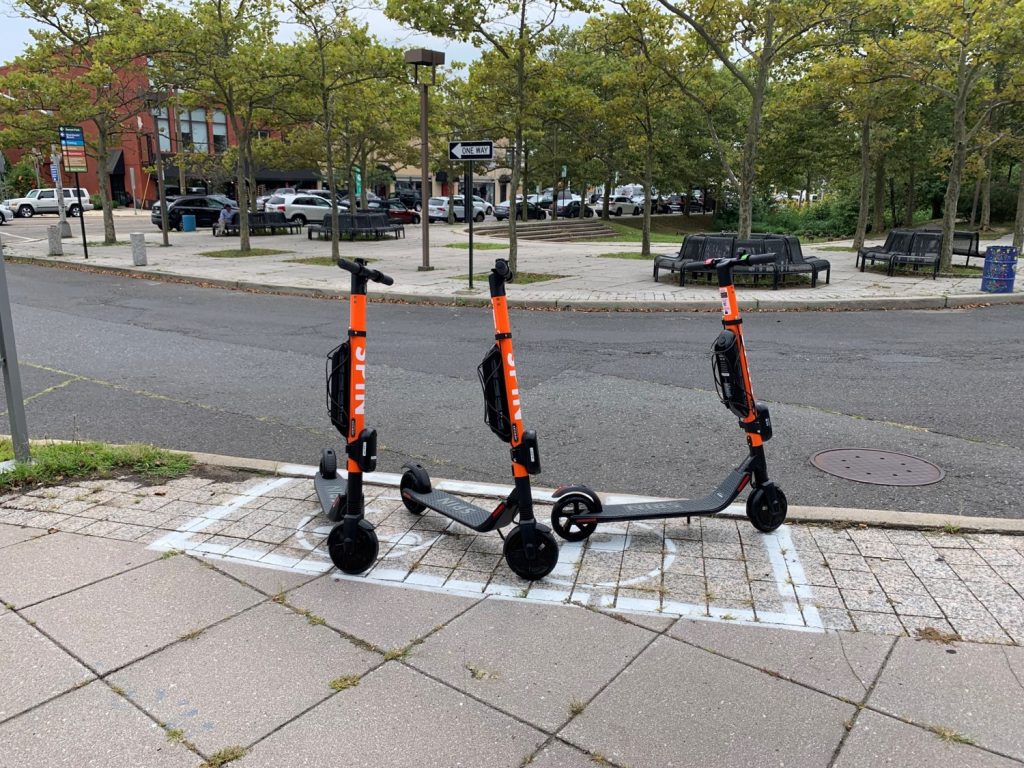
When the program was first launched, community opinion was split. Negative, national media coverage of e-scooters didn’t help. But as the Asbury Park program has taken shape, Mike has seen “overwhelmingly positive support.”
4. People can change their minds on regulated parking
When the city implemented metered parking in 2011, the policy unsurprisingly sparked public rancor. But since taking up his position with the City, Mike has seen opposition give way to the realization that parking must be properly valued to make dense, vibrant development possible. Mike and the City have continued to reiterate that regulated and paid parking “is the only way to ensure that people can find a space when they need it.”
When it comes to effective parking management, there are two sides to the coin, Mike explains. On the demand management side, the City encourages people to take the train to Asbury Park, and once there, to ride a bike or scooter, thereby lowering parking demand. On the supply side, the City is working to expand regulated parking zones to prevent people “from storing cars for free as long as they want,” as Mike put it.
While regulating and charging for parking, the city has also made parking more convenient through tech-driven solutions, such as smart parking meters that accept payment through an app and a license plate-based permit system that eliminates the need for decals and tags. These systems facilitate enforcement and have resulted in increased parking revenue for the city.
5. Regulated parking is good for local business. Regulated parking is good for local business. Regulated parking is good for local business.
A point Mike is sure to drive home is that metered parking is not the enemy of local businesses. Just the opposite. Metered parking ensures there is enough parking space turnover to support patronage. Moreover, smart allocation and regulation of parking supply is essential to creating a walkable environment that generates foot traffic for the city’s many restaurants, cafes, bars, and shops.
In addition, the City uses parking revenue to pay for improvements that benefit local businesses. In 2019, the city adopted a new transportation utility ordinance that allows for more flexible use of parking revenue to support a range of Complete Streets improvements. An improved financial position – Asbury Park was removed from State Transitional Aid in 2019 – will allow the City to ramp up parking revenue spending in coming years.
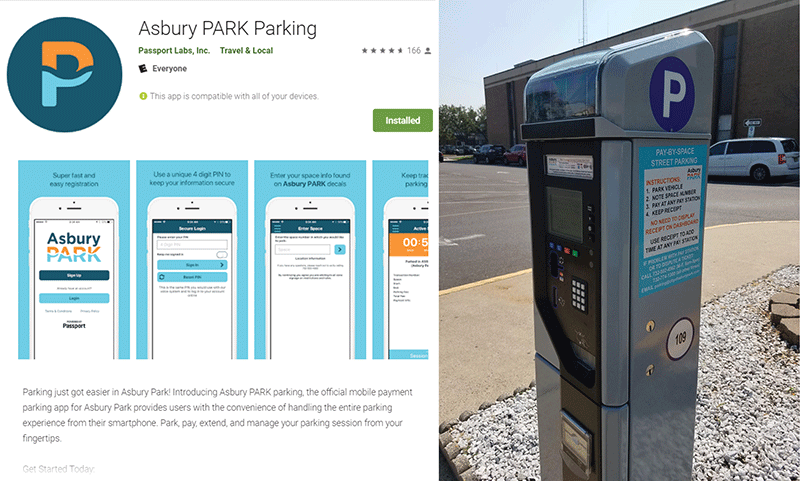
6. Provide flexibility when it comes to parking requirements
Parking requirements can be a major sticking point for TOD. What’s too little? What’s too much? While considering lowering parking minimums city-wide, the City has also taken an approach of offering more flexibility to developers. A redevelopment plan for the downtown area sets minimum parking requirements, but allows applicants to fulfill the requirements offsite or by paying a payment in-lieu of parking fee at $15,000 a space. The City will use fee revenue as part of the funding to construct the train station redevelopment site parking structure.
“The development community is on board that we need more centralized, structured parking and maybe less of an emphasis on onsite parking and requirements,” Mike noted.
7. Understand your transit assets
Transit functions differently in different TOD communities. The NJ TRANSIT Asbury Park rail station is a major asset that the City is hoping to leverage into new development. The rail service brings tourists into town, but Asbury Park is too distant from New York or even Newark to serve as a rail commuter bedroom community. And for many residents, the availability of transit connections and frequency of service in Asbury Park is not sufficient to support a carless lifestyle. However, the mix of a walkable downtown, widespread availability of micro-mobility options, and rail service are encouraging a shift away from cars.
“More and more, the people who are moving here are not bringing a lot of cars with them,” says Mike, “and I think that’s a tribute to what we’ve been doing in the past few years in terms of providing alternative forms of transportation.”
8. Work with advocates
The City works closely with local advocates on transportation issues, including the Asbury Park Complete Streets Coalition. The Coalition has been instrumental in educating the public about alternate modes of transportation and bike-ped safety. The Coalition participated as a stakeholder committee member in the preparation of a Bicycle and Pedestrian Master Plan adopted by the City in April 2019. Among the plan’s recommendations is a proposed bicycle network that Mike says is crucial to getting more people to ride bikes and do so safely. Mike keeps in frequent contact with the group and attends the Coalition’s monthly meetings and bike rides.
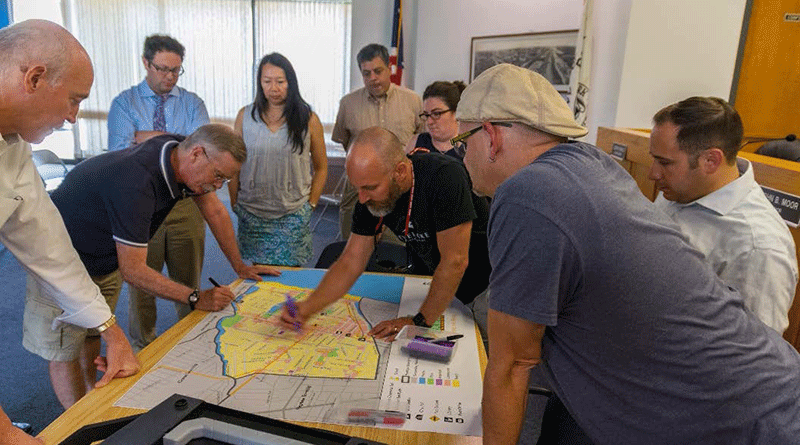
9. Try new things
The transportation landscape is constantly changing amid the rise of on-demand, app-based mobility options. Communities should be open to new possibilities. While some approaches might fall to the wayside, others will stick and offer serious benefits to community members of different backgrounds. Asbury Park is evaluating a potential, on-demand shuttle service users would order through an app. The shuttle would act as a circulator service available in all areas of the city. Jersey City recently launched a similar system.
10. Hire a transportation planner!
If we learned anything from our conversation with Mike, it’s that all these issues – from e-scooters to paid parking – are intertwined. The last lesson Mike left us with is look at the big picture. And the best way to do that is to hire someone for the job. Many New Jersey municipalities don’t maintain a transportation planner position, but there are important reasons to do so. Having a transportation planner on staff helps focus necessary, undivided attention on vital municipal functions – from parking to infrastructure improvements. Many of the programs implemented in Asbury Park could have gone unrealized; a large part of their success is due to having a dedicated staff member who carefully manages the programs, works and negotiates with vendors, responds to community concerns, and conducts outreach.
As Mike points out, it’s a sensible investment: “For the most part, if parking is managed properly and paid parking is introduced, the investment should pay for itself. You have to get that cycle going.”
Finally, we asked Mike his favorite thing about being a transportation planner rock star (actually we just asked him what he enjoys most about his job). His response: “Being able to formulate a plan and follow it through to implementation in a way that has a direct beneficial impact on the community in which I live and work!”
Michael J. Manzella, PP, AICP, is the Director of Transportation and Deputy City Manager for the City of Asbury Park, managing the City’s Transportation Utility, and overseeing public parking operations and policy. He develops and directs comprehensive transportation planning and oversees the implementation of Complete Streets initiatives and transportation services. He received an MCRP from the Bloustein School at Rutgers University and a B.E. in Engineering Management from Stevens Institute of Technology. He is a resident of Asbury Park and serves on the Planning Board, chairs both the Parking and Mayor’s Wellness Committees, and is a member of the Boundary Spanning Leadership Team with the Alliance for a Healthier Asbury Park.

